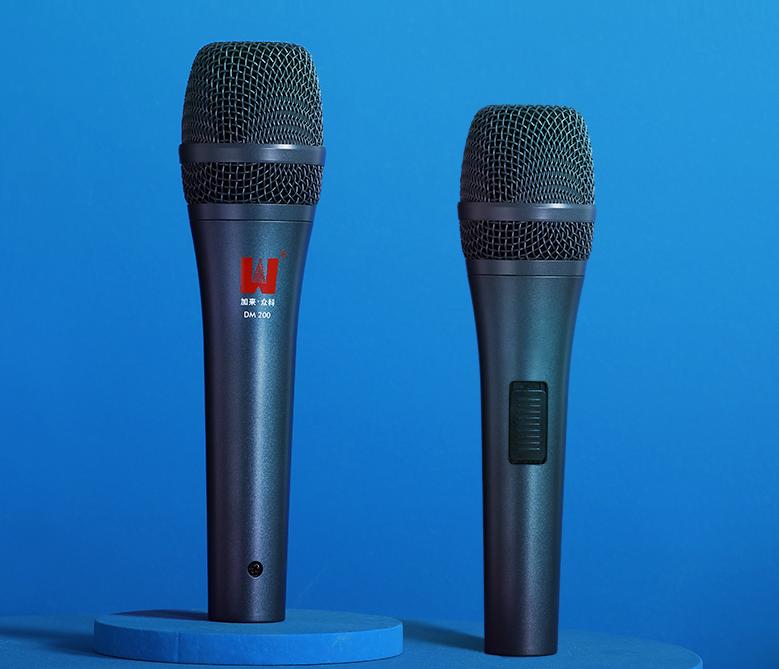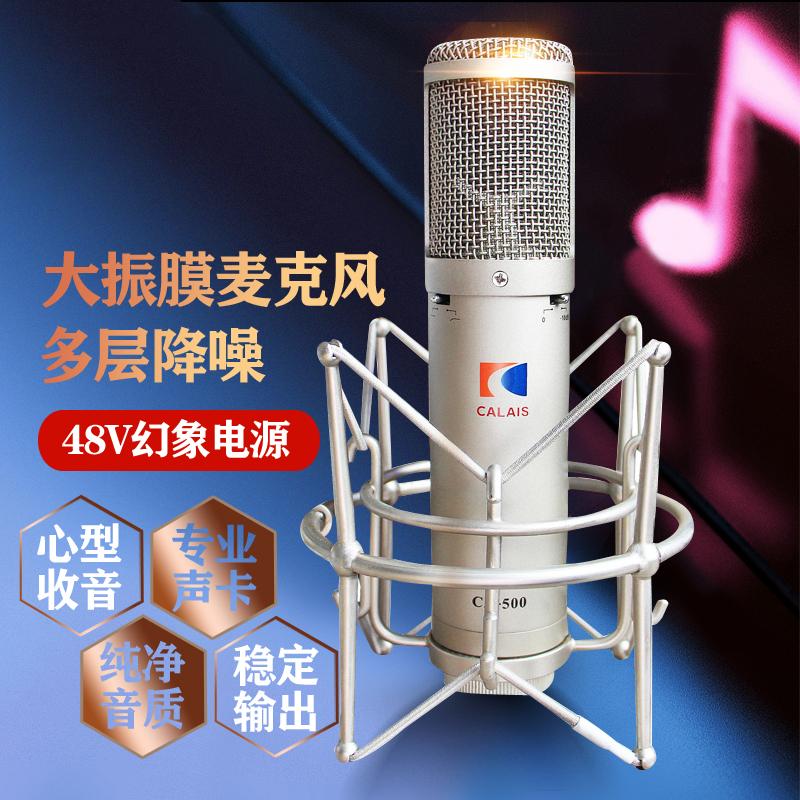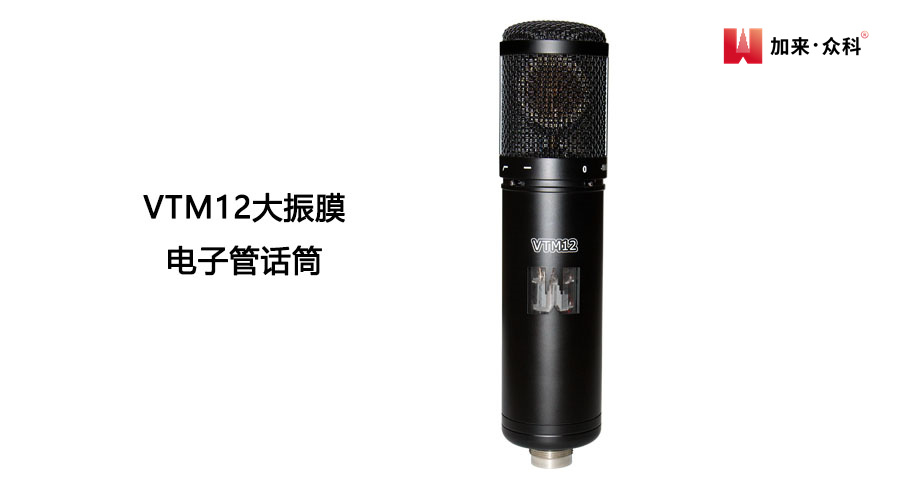A microphone is a very personal item for a musician, and there are many factors to consider when choosing it. In the wide variety of microphones, there is no theorem that 'a type of microphone is better'. Each type of microphone has its own unique properties and uses, and produces different sound textures. Let's take a look at 7 common types of microphones.
Dynamic microphone
The meaning of 'moving coil' is that the wire coil closely connected to the diaphragm moves continuously in the magnetic field according to the change of sound pressure, thereby generating a current that changes in proportion to the amplitude of the sound wave. In this way, the acoustic signal is converted into an electrical signal.

The coil cutting magnetic field of the dynamic microphone directly generates current, so the dynamic microphone does not need power supply. The advantage of a dynamic microphone is its simplicity and ruggedness. The downside is that the diaphragm is less responsive to rapidly changing sound waves than other types of microphones due to being 'dragged' by the wire coil.
Getting a dynamic mic to pick up the high-frequency parts of the wiper's energy is difficult, but when picking up a solid kick or snare sound, a dynamic mic can perform satisfactorily. Dynamic microphones are also often used to record sound from electric guitar amps.
Dynamic microphones are often used for vocal recordings, which is largely a 'traditional practice'. Because the previous condenser microphones were bulky and fragile. But while condenser mics designed specifically for live vocals are ubiquitous these days, their more expensive average prices tend to favor dynamic mics that do the job equally well.
Small-diaphragm condenser microphone
The condenser microphone is designed based on the principle of electrostatics. The diaphragm and the back plate form a capacitive unit. The vibration of the diaphragm with the sound wave causes the potential difference between it and the back plate to change, thereby converting the acoustic signal into an electrical signal. Condenser microphones generally have built-in amplifiers, because the output of the condenser unit is very weak. Condenser microphones require external 48 V phantom power or batteries.
The significance of choosing a small-diaphragm condenser microphone is that those small diaphragms with a diameter of about 12 mm are very sensitive to the vibration of sound waves. The larger the diaphragm, the less sensitive it is to sounds that are not directly on the microphone, and the more pronounced the coloration from resonance.
If you want extremely fine-tuned sound, then a small-diaphragm condenser microphone is the way to go. It's important to note that a finer sound is not necessarily a more satisfying sound, and sometimes a finer sound can sound less dynamic and powerful. But if you want to record the sounds of nature completely, small-diaphragm condenser microphones should be your choice.
Large-diaphragm condenser microphone
In the past, microphone manufacturers could not make the diaphragm as delicate as it is now, and all condenser microphones at that time should be called 'large-diaphragm condenser microphones'. Of course, there is no dividing line to define what is a 'large diaphragm' and what is a 'small diaphragm'. As mentioned earlier, a size around 12 mm can be called a 'small diaphragm', while a size of 24 mm or more can be considered a 'large diaphragm'. When buying a microphone, we will find that some microphones that look very large have unexpectedly small diaphragms, so the size of the diaphragm is a microphone parameter that requires us to pay special attention.

The great thing about a large-diaphragm condenser mic is that it gives you the kind of sound that studios really appreciate—not the most natural sound, but a thick, warm sound that feels very comfortable no matter what you're recording.
The disadvantage is that the higher the frequency of the sound, the more directional the large-diaphragm condenser microphone becomes. This is not a problem if you are listening directly to the microphone, but if you use two microphones for stereo recording, the sound from the side may not be ideal.
vacuum tube microphone
The design and manufacture of this type of microphone dates back to the early days of condenser microphones. At that time, since transistors had not yet been widely used, the built-in amplifiers of condenser microphones used vacuum tubes. Although some vacuum tube microphones used to have small diaphragms, most of the vacuum tube microphones we see now have large diaphragms.

The advantage of vacuum tube microphones is that tube amplifiers tend to produce a very pleasant and pleasant distortion effect, a 'warm sound'. For vocals, this warm distortion is often used as a panacea.
Unlike other types of microphones, vacuum tube microphones have become very popular because the days of vacuum tubes are long gone, and the price is often high.
Ribbon Microphone
Ribbon microphone is a special kind of dynamic microphone. The diaphragm of a traditional dynamic microphone is closely connected with a wire coil, while the aluminum ribbon microphone is made by combining the diaphragm and the wire coil to form an aluminum ribbon (or metal ribbon). Because the aluminum ribbon is very thin, the sensitivity of the aluminum ribbon microphone to sound waves is comparable to that of the condenser microphone, but the sound of the general aluminum ribbon microphone is relatively dark.
The Ribbon Microphone records sound with clear detail but a little muted. This makes them often used artistically in the recording studio.
Ribbon microphones are generally very fragile, so fragile that some brands of manuals will remind users to walk slowly when holding the ribbon microphone to pick up the sound, so as to avoid the air passing through the microphone too fast and causing the ribbon to dislocate.
Like dynamic microphones, most ribbon microphones do not require external power supply (except for some with built-in amplifiers). However, the output of aluminum ribbon microphones is generally relatively small, so it is better to use with preamplifiers.
Electret Microphone
An electret microphone is a special type of condenser microphone. We already know that the principle of the condenser microphone is that the amount of polarized charge on the capacitor changes, thereby generating an electrical signal at both ends of the capacitor to achieve acoustic-electrical signal conversion. An electret material is a material that retains these charges for a long time after being charged. Using this principle, the electret material on the diaphragm or backplane provides the constant voltage required by the capacitor unit, which can save the power supply part of the microphone. However, the work of the built-in microphone amplifier still needs to be powered by batteries or phantoms. It should be noted that electret microphones powered by batteries are less sensitive than those powered by phantoms, and their ability to handle large sound pressures is also weaker.
Piezo Microphone
Piezoelectric microphones are also called crystal microphones. The principle is to use the piezoelectric effect of certain materials - that is, the deformation of the material caused by sound produces a change in voltage.
Piezoelectric microphones exist today mainly in the form of contact microphones, a typical example being guitar pickups. Piezo microphones pick up the physical vibrations of the sound source directly, rather than sound waves in the air. The benefit is to isolate the instrument sound from other sounds. However, the sound picked up in this way will not be particularly real, so the application of piezoelectric microphones is relatively limited.
Summarize
These are the 7 types of microphones divided according to their working principles. Being able to understand their basic workings and identify their unique sounds is one of the essential skills of every music producer.